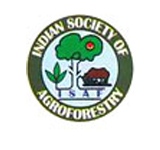
Vigyan Bhavan & Kempinski Ambience
10 - 14 February 2014
Delhi, India
blog

Woman farmer in Nepal. Photo by Neil Palmer (CIAT)
A session at the forthcoming World Congress on Agroforestry will hear the results of ethnographic research from India that showed how agroforestry can bring high value to households in dry areas with degraded land.
In a paper that explores the gender dimension of agroforestry in semi-arid tribal districts of western India, Purabi Bose of the International Center for Tropical Agriculture (CIAT) will shed light on the important roles played by women and men.
“Men tend to participate more in the meetings, but women are in charge regarding improving the soil quality, and adaptive to agroforestry-related innovations to tackle droughts in the region,” says Bose in a her abstract.
Bose points out that most of the land under agroforestry in her study area was owned (or claimed) by men.
She also found that in the villages, men made most of the decisions on the marketing, while the decisions related to planting and fodder production were made by women. When it came to establishing networks within the villages, however, the women were “more actively involved in communication and exchanging ideas than the men.”
These findings mirror several studies in Africa and Asia, which indicate that smallholder women farmers hold the key to food security in the developing world. According to the UN Food and Agriculture organization (FAO), women produce between 60 and 80 per cent of the food in most developing countries, and are responsible for half of the world’s food production.
The International Centre for Research on Women says there is need to focus on women farmers, since they are integral to alleviating hunger and malnutrition; they make important decisions to ensure that food for their families is reliably available, accessible and nutritionally sound.
Bose’s abstract, titled ‘Gender matters in agroforestry in dry and degraded lands? An analysis from tribal India,‘ concludes that it is important for both men and women to play an active role in implementing agroforestry activities, in order to tackle challenges such as drought and soil infertility.
By Isaiah Esipisu






8 People have left comments on this post
Gender sensitivity has to be included in all agricultural, agroforestry development work.
excellent
Some of us in Colombia and Peru have been discussing this very same issue on gender differences in smallholder agriculture and forestry. Although the dry forests are clearly smaller in extent here, especially in Colombia, these areas might expand with climate change. It might be interesting to do some comparative research between the India experience and what we see here.
Good blog. Dr.R.P. Dwivedi has put Bose’s message in one simple line.
True. With little bit planning in agroforestry, women will get a distributed work in good environment with little less hard work, and can get distributed income also.
The women and children of poor families get hardest hit of environmental miseries. They remain most vulnerable and perhaps that is the reason why women show more intrest in finding the solution. The effort to provide flagship in women’s hand is commendable. This is also an example of social inclusion besides addressing gender issue. Moove forward
the path for women empowerment
I appreciate the findings by Ms.Bose. It is the fact he gender plays a critical subject in family economy and women contribute the most. This is commonly found in backward tribal and small land holding communities.